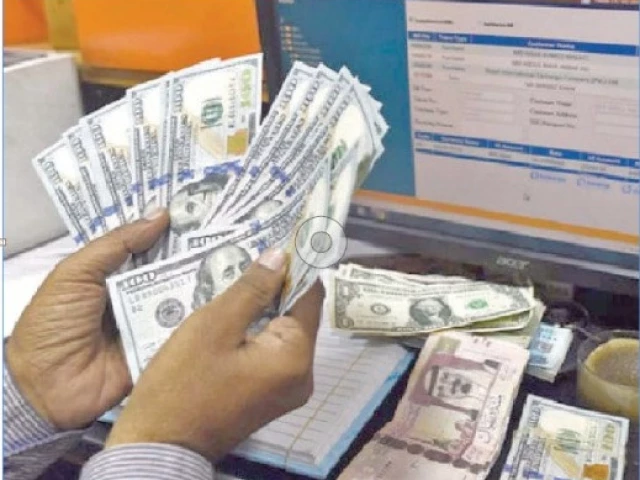KARACHI:
Pakistan’s total liquid foreign exchange reserves stood at $19.96 billion as of July 11, 2025, marking a marginal decline of $71.6 million over the previous week, according to data released by the State Bank of Pakistan (SBP) on Thursday.
The reserves held by the SBP rose by $23 million, reaching $14.53 billion, compared to $14.50 billion recorded a week earlier. This reflects the second consecutive weekly increase in central bank reserves. However, commercial banks saw a notable dip in their net foreign holdings, which fell by $95 million to $5.43 billion.
The current foreign reserves provide Pakistan with over three months of import cover. Out of the SBP’s total foreign exchange holdings of $14.5 billion, approximately $9.4 billion comprises deposits from friendly countries. In June 2025, China rolled over $3.4 billion in commercial loans, with $2.1 billion deposited directly with the SBP. Saudi Arabia and the UAE have provided up to $2 billion and $1 billion, respectively, while Qatar has contributed around $3 billion through deposits and direct investments.
Moreover, the central bank conducted two separate Open Market Operations (OMOs) on Thursday to inject a liquidity of Rs902.5 billion into the banking system – one under the Shariah-compliant Mudarabah-based framework and the other through a conventional reverse repo arrangement. Both operations were conducted with an eight-day tenor.
In the Shariah-compliant OMO, the central bank accepted all three submitted quotes within a narrow rate band of 11.13% to 11.15% per annum. The total injection was Rs37.39 billion (realised value) against a face value of Rs37 billion, with the rate of return fixed at 11.13%.
Simultaneously, the SBP carried out a conventional reverse repo OMO, receiving 13 quotes, of which 11 were accepted. The accepted bids amounted to a face value of Rs883.2 billion, with a realised value of Rs865.13 billion. The rate of return was 11.08% per annum.
In the latest Pakistan Investment Bonds’ (PIBs) auction held on July 16, the government raised Rs311.82 billion, surpassing its target of Rs300 billion, mainly through five-year bonds.
Cut-off yields dropped significantly across all tenors by 19 to 54 basis points compared to June, which reflected strong market confidence and expectations of policy rate cut amid easing inflation and improving macroeconomic indicators. Notably, the two-year and five-year bonds saw the steepest decline in yields, while the 15-year bond got no bids.
“The sharp decline in yields signals growing market anticipation of a policy rate cut in the upcoming monetary policy, likely driven by easing inflation and improved macro indicators,” noted Ali Najib, Deputy Head of Trading at Arif Habib Limited.
The Pakistani rupee remained stable against the US dollar on Thursday, closing at 284.97, down by just one paisa from 284.96 a day earlier.
Meanwhile, gold prices in Pakistan continued to slide, mirroring a downturn in the international market, where bullion extended losses following robust US economic data. The data bolstered expectations that the Federal Reserve would remain cautious in resuming monetary easing this year, putting pressure on safe-haven assets like gold.
According to the All Pakistan Sarafa Gems and Jewellers Association, the price of gold dropped by Rs900 per tola, settling at Rs355,100.
Interactive Commodities Director Adnan Agar noted, “After dipping slightly, the market has rebounded somewhat. The $3,300 level is acting as a strong support,” he said. “If prices fall below that, we could see a bearish trend. However, if this level holds, resistance lies ahead at $3,350, then $3,380 and eventually at $3,400.”
